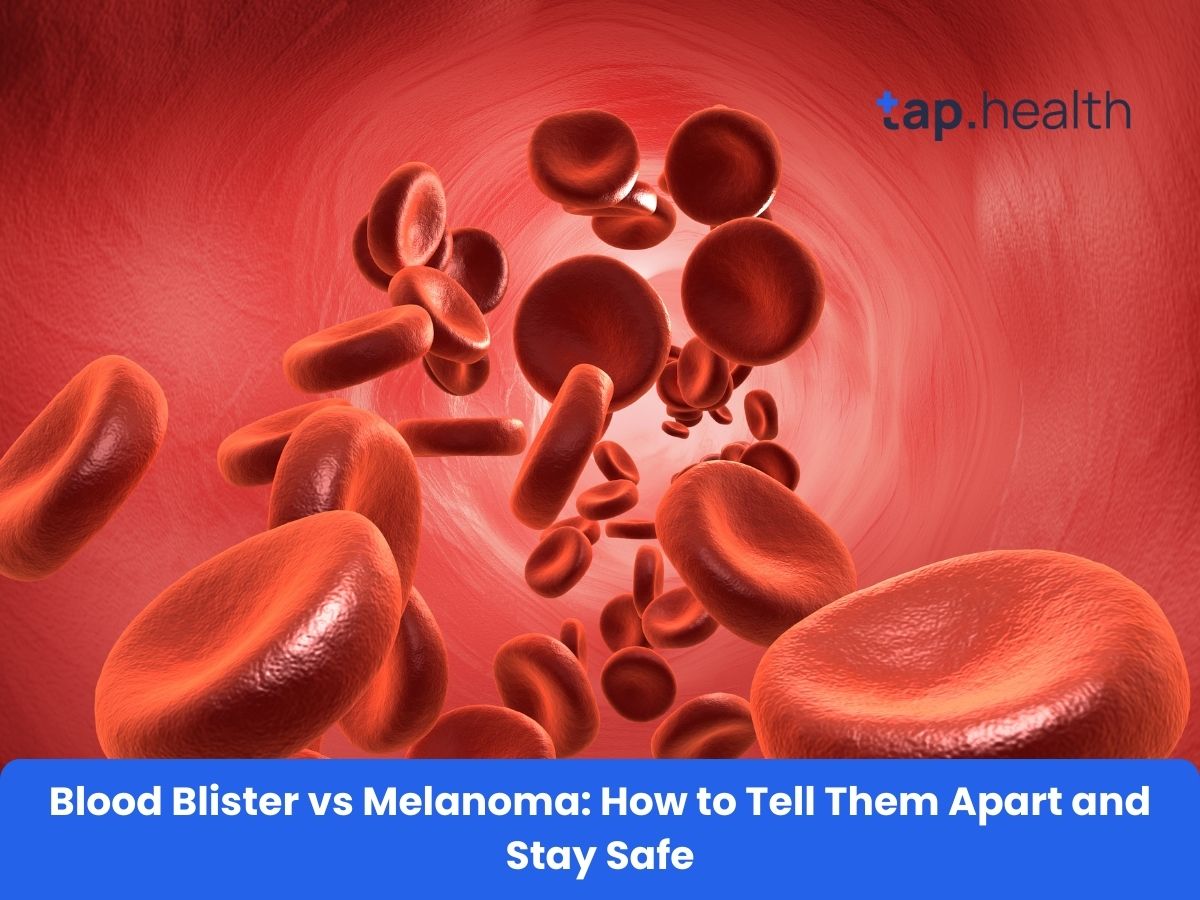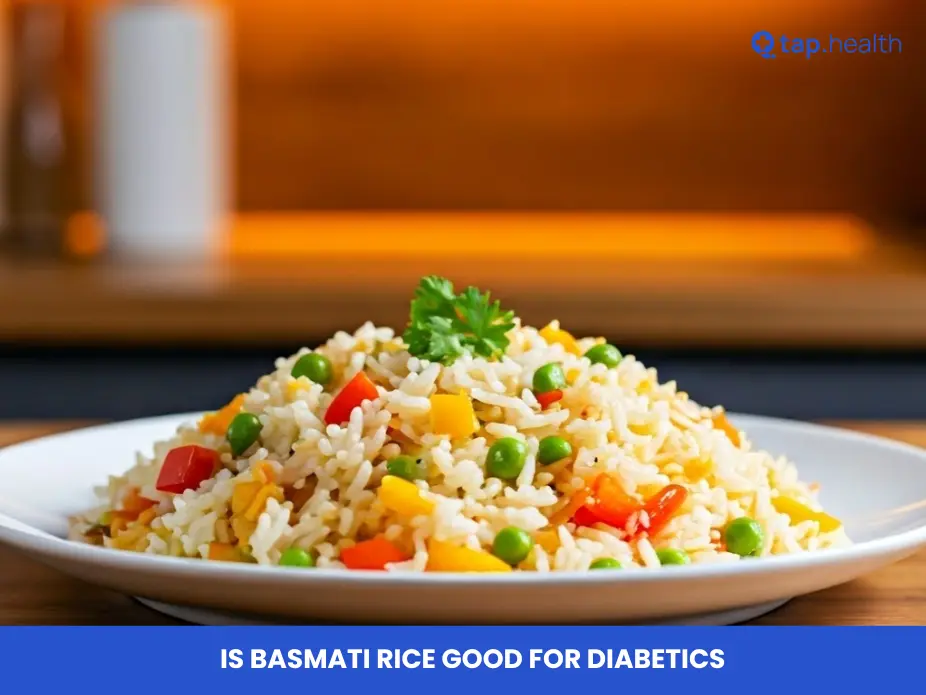You look down at your finger or toe and see a dark, purple-black bump. Panic sets in. Is it just a harmless blood blister from that time you pinched your finger in a drawer, or is it something more serious, like skin cancer?
This is a very common fear. Both blood blisters and melanoma (the most dangerous form of skin cancer) can look frighteningly similar. They can both appear as raised, dark bumps on the skin. However, knowing the subtle differences between them can save you a lot of worry—and potentially save your life.
In this comprehensive guide, we will break down exactly how to distinguish between a temporary injury and a serious medical condition. We will explore the causes, symptoms, and the “ABCDE” rule used by dermatologists worldwide. Our goal is to give you clear, easy-to-understand information so you can make the right decision for your health.
What is a Blood Blister?
Let’s start with the harmless one. A blood blister is essentially a pocket of fluid under the top layer of your skin, but instead of clear liquid (like a friction blister), it is filled with blood.
Causes of Blood Blisters
These usually happen due to minor trauma or injury. Think about these common situations:
- Pinching: Getting your finger caught in a door or a drawer.
- Friction: Wearing new shoes that rub against your heel or toes while walking.
- Impact: Hitting your thumb with a hammer (ouch!).
When the skin is pinched or crushed, the tiny blood vessels (capillaries) underneath break, but the skin itself doesn’t tear open. The blood leaks out and gets trapped, forming a dark red, purple, or black bubble.
Characteristics of a Blood Blister
- Appearance: A round, raised bubble. The colour can range from bright red (fresh) to dark purple or black (older).
- Pain: They are usually painful or tender to the touch, especially when they first appear.
- Evolution: They tend to heal on their own. Within a week or two, the fluid dries up, the skin peels off, and the mark disappears.
What is Melanoma?
Melanoma is a type of skin cancer that develops in the melanocytes—the cells that produce melanin (the pigment that gives your skin its colour). While it is less common than other skin cancers, it is considered the most dangerous because it can spread (metastasise) to other parts of the body if not treated early.
Causes of Melanoma
Unlike a blister, melanoma isn’t caused by a single pinch or injury. It is primarily caused by:
- UV Radiation: Excessive exposure to the sun or tanning beds.
- Genetics: A family history of skin cancer.
- Skin Type: People with fair skin, light eyes, and many moles are at higher risk (though it can occur in darker skin tones too).
Characteristics of Melanoma
- Appearance: It often looks like a new mole or an existing mole that has changed shape. It can be brown, black, blue, or even red.
- Pain: Crucially, early-stage melanoma is usually painless. It doesn’t hurt when you touch it.
- Evolution: It does not heal. It grows or changes over weeks, months, or years.
Blood Blister vs Melanoma: The Key Differences
To help you spot the difference quickly, let’s look at a direct comparison. This table simplifies the main distinctions.
| Feature | Blood Blister | Melanoma (Skin Cancer) |
| History | You likely remember an injury (pinch, rub, impact). | No specific injury; appears spontaneously. |
| Pain | Usually painful or tender. | usually painless (in early stages). |
| Colour | Uniform colour (dark red/purple). | Often has mixed colours (black, brown, tan). |
| Healing | Heals and disappears in 1–2 weeks. | Does not heal; grows or changes over time. |
| Shape | Round or oval with smooth borders. | Irregular shape with jagged borders. |
The ABCDE Rule: How to Spot Melanoma
Dermatologists use a very specific checklist called the ABCDE rule to identify potential melanomas. If your dark spot matches these criteria, it is likely not a blister.
A for Asymmetry
Imagine drawing a line down the middle of the spot.
- Blister: Both sides usually look the same (symmetrical).
- Melanoma: One half does not match the other half (asymmetrical).
B for Border
Check the edges of the spot.
- Blister: The edges are smooth, regular, and well-defined.
- Melanoma: The edges are often ragged, notched, or blurred. It looks like the colour is “leaking” into the surrounding skin.
C for Colour
Look at the shade of the spot.
- Blister: Usually a consistent colour throughout (red, purple, or black).
- Melanoma: Often has multiple shades. You might see a mix of tan, brown, and black, or sometimes white, red, or blue.
D for Diameter
Check the size.
- Blister: Can be any size but rarely grows larger after the initial injury.
- Melanoma: Often larger than 6mm (about the size of a pencil eraser), though they can be smaller when diagnosed early.
E for Evolving
This is the most important factor.
- Blister: Evolves by drying up, peeling, and fading away.
- Melanoma: Evolves by changing size, shape, or colour. It might start itching or bleeding (without injury) later on.
Nodular Melanoma: The Tricky Exception
There is a specific type of skin cancer called Nodular Melanoma that is notorious for looking exactly like a blood blister.
Unlike standard melanoma, which spreads flat across the skin first, nodular melanoma grows downwards (deeper into the skin) very quickly. It is:
- Firm to the touch (hard, not squishy like a blister).
- Often a single colour (black, red, or skin-coloured).
- Perfectly round and symmetrical (breaking the ABCDE rules).
The “E” rule is your best defence here. If you have a “blister” that hasn’t healed after a month, is firm to the touch, and you don’t remember hurting that area, you must see a doctor immediately.
Real-Life Scenario
Case Study: The “Stubborn” Toe Injury
Let’s look at Rahul, a 45-year-old cricket enthusiast from Mumbai. He noticed a dark purple spot under his big toenail. He assumed it was a blood blister from playing cricket in tight shoes (a condition often called “runner’s toe”).
The Mistake:
Rahul ignored it for three months. He thought, “It’s just a bruise; it takes time to heal.”
The Realisation:
After three months, the “blister” hadn’t moved. A real blood blister under a nail usually grows out as the nail grows. This spot stayed at the base of the nail and actually got wider. It wasn’t painful, but it looked odd.
The Diagnosis:
He finally visited a dermatologist. A biopsy confirmed it was Subungual Melanoma (melanoma under the nail). Because he waited, the treatment was more complex than if he had come in earlier.
The Lesson: If a “blister” lasts longer than 2–3 weeks, it is not a blister.
Expert Contribution
We consulted with dermatologists to understand the mindset of patients dealing with these spots.
Dr. Priya Sharma, a Consultant Dermatologist based in Delhi, shares:
“The biggest confusion I see is with something called a ‘talon noir’ or ‘black heel.’ This is a cluster of tiny blood blisters on the heel caused by the shearing force of sports. It looks terrifyingly like melanoma.”
Her Advice on How to Check:
“I use the ‘paring test’ in the clinic. If I gently scrape the top layer of skin, the pigment of a blood blister comes off because the blood is trapped in the upper layer. With melanoma, the pigment goes deep into the skin and cannot be scraped off. Do not do this at home. If you are unsure, let a professional look at it with a dermatoscope.”
Recommendations Grounded in Proven Research and Facts
Based on guidelines from the Skin Cancer Foundation and American Academy of Dermatology, here are the recommended steps you should take:
1. The “Wait and Watch” Approach (2 Weeks Max)
If you remember pinching your skin, it is safe to wait. A blood blister should change significantly in two weeks. It should dry up, flatten, or peel. If it looks exactly the same (or bigger) after two weeks, the “wait” period is over.
2. Don’t Pop It
If it is a blood blister, never pop it with a needle. This breaks the sterile seal and introduces bacteria, leading to infection. Let your body reabsorb the fluid naturally.
3. Check for the “Ugly Duckling” Sign
Most people’s moles look similar to each other. Melanoma often stands out like an “ugly duckling.” If you have one spot that looks completely different from all your other spots, get that specific one checked.
4. Know Your Risk Factors
If you have fair skin, a history of sunburns, or more than 50 moles on your body, your threshold for seeing a doctor should be lower. You are statistically at higher risk for melanoma.
Frequently Asked Questions (FAQ) on Blood Blister vs Melanoma
1. Can a blood blister turn into melanoma?
No, a blood blister cannot turn into melanoma. They are completely different things. A blood blister is a result of trauma (injury), while melanoma is a result of DNA damage in skin cells. However, a melanoma can sometimes bleed, making it look like a blister, which causes the confusion.
2. How long does a blood blister last?
A typical blood blister lasts anywhere from one to two weeks. It will slowly darken, dry out, and eventually peel off like dead skin. If a dark spot remains on your skin for more than a month, it is highly unlikely to be a simple blister.
3. Does melanoma hurt when you press it?
Usually, no. In its early stages, melanoma is painless and does not itch. A blood blister, on the other hand, is usually tender or painful because of the pressure of the trapped fluid and the underlying injury. Pain is actually a “good” sign that it might just be an injury.
4. What does melanoma look like on darker skin?
On Indian or darker skin tones, melanoma often appears in places that get less sun. Check the palms of your hands, the soles of your feet, and under your fingernails or toenails. It usually looks like a dark brown or black patch that is growing or has irregular borders.
5. Should I be worried about a blood blister in my mouth?
Blood blisters in the mouth (often on the cheek or tongue) are very common and usually caused by accidentally biting yourself or eating crunchy food. They heal quickly. However, if a dark spot in your mouth lasts for weeks without healing, see a dentist or doctor to rule out oral cancer.
6. Can tight shoes cause marks that look like melanoma?
Yes. Friction from tight shoes can cause “friction blisters” filled with blood, or even bleeding under the toenail (subungual hematoma). This turns the nail black. The key difference is that as your nail grows, the black spot should move up and eventually be cut off. If the black spot stays at the base of the nail, see a doctor.
7. What is a dermatoscope?
A dermatoscope is a special magnifying lens with a light that dermatologists use. It allows them to see below the surface of the skin. They can see the pattern of the pigment. A blood blister has a distinct “lacunes” (pools of blood) pattern, while melanoma has a chaotic, irregular network. This is the most accurate non-invasive way to tell them apart.
8. Is sudden appearance a sign of melanoma?
Melanoma can appear suddenly, but it usually grows slowly over months. A blood blister appears very suddenly—usually minutes or hours after an injury. If you wake up with a dark bump and remember pinching yourself yesterday, it’s a blister. If a spot appears out of nowhere without injury and stays there, get it checked.
Key Takeaways
- Context is King: If you pinched your finger or wore tight shoes, it’s likely a blood blister. If there was no injury, be suspicious.
- Time Test: Blood blisters heal in 1–2 weeks. Melanoma persists and grows.
- The ABCDE Rule: Look for Asymmetry, irregular Borders, mixed Colours, large Diameter, and Evolution (change).
- Pain Factor: Blisters usually hurt; early melanoma usually doesn’t.
- When in Doubt: If a dark spot hasn’t healed in two weeks, see a dermatologist. It is always better to be safe than sorry.
References
NHS (UK): Skin Cancer (Melanoma)
Mayo Clinic: Melanoma Symptoms and Causes
American Academy of Dermatology: What to look for: ABCDEs of melanoma
Healthline: Blood Blister vs. Melanoma: Identification and Treatment
Skin Cancer Foundation: Warning Signs of Melanoma



